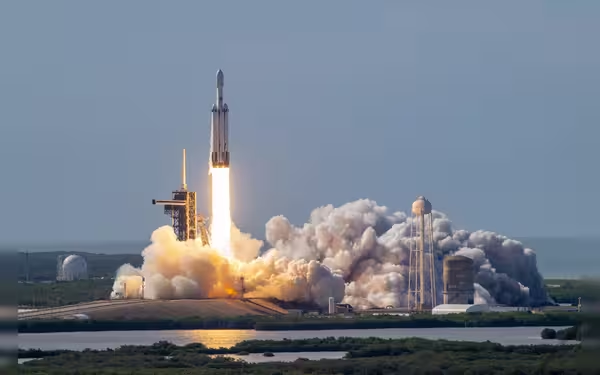Thursday, July 4, 2024 06:33 PM
NASA and NOAA Launch Advanced Satellite for Space Weather Monitoring
- New satellite enhances solar flare forecasts and coronal mass ejection monitoring
- Inclusion of coronagraph CCOR-1 allows observation of coronal mass ejections
- Level 5 geomagnetic storm highlights importance of accurate space weather forecasting
 Image Credits: NASA
Image Credits: NASAThe successful launch of a cutting-edge satellite by NASA and NOAA enhances solar flare forecasts and coronal mass ejection monitoring, crucial for safeguarding critical infrastructure from space weather disruptions.
The United States has successfully launched a state-of-the-art satellite from Cape Canaveral, Florida, as part of the GOES-U mission, a collaboration between NASA and NOAA. This cutting-edge satellite, positioned 22,236 miles above the equator, is designed to enhance forecasts of solar flares and coronal mass ejections, crucial for monitoring environmental phenomena since 2016.
One of the key features of this new satellite is the inclusion of a coronagraph, CCOR-1, which allows scientists to observe coronal mass ejections from the sun. These ejections, if directed towards Earth, have the potential to disrupt essential systems such as satellites and energy infrastructure. The ability to predict these events up to four days in advance is vital for minimizing possible damages.
Recently, a level 5 geomagnetic storm occurred, underscoring the significance of accurate space weather forecasting. The continuous monitoring capabilities of the new satellite will provide real-time data, a significant improvement over the current system with notable delays. This technological advancement represents a major stride in space weather observations, particularly considering the growing impact of solar activities on modern society.
The successful launch of the advanced satellite marks a milestone in improving our understanding and prediction of solar flares and coronal mass ejections. With the enhanced capabilities of this satellite, scientists and researchers can now monitor space weather more effectively, providing timely warnings and safeguarding critical infrastructure from potential disruptions caused by solar phenomena.













